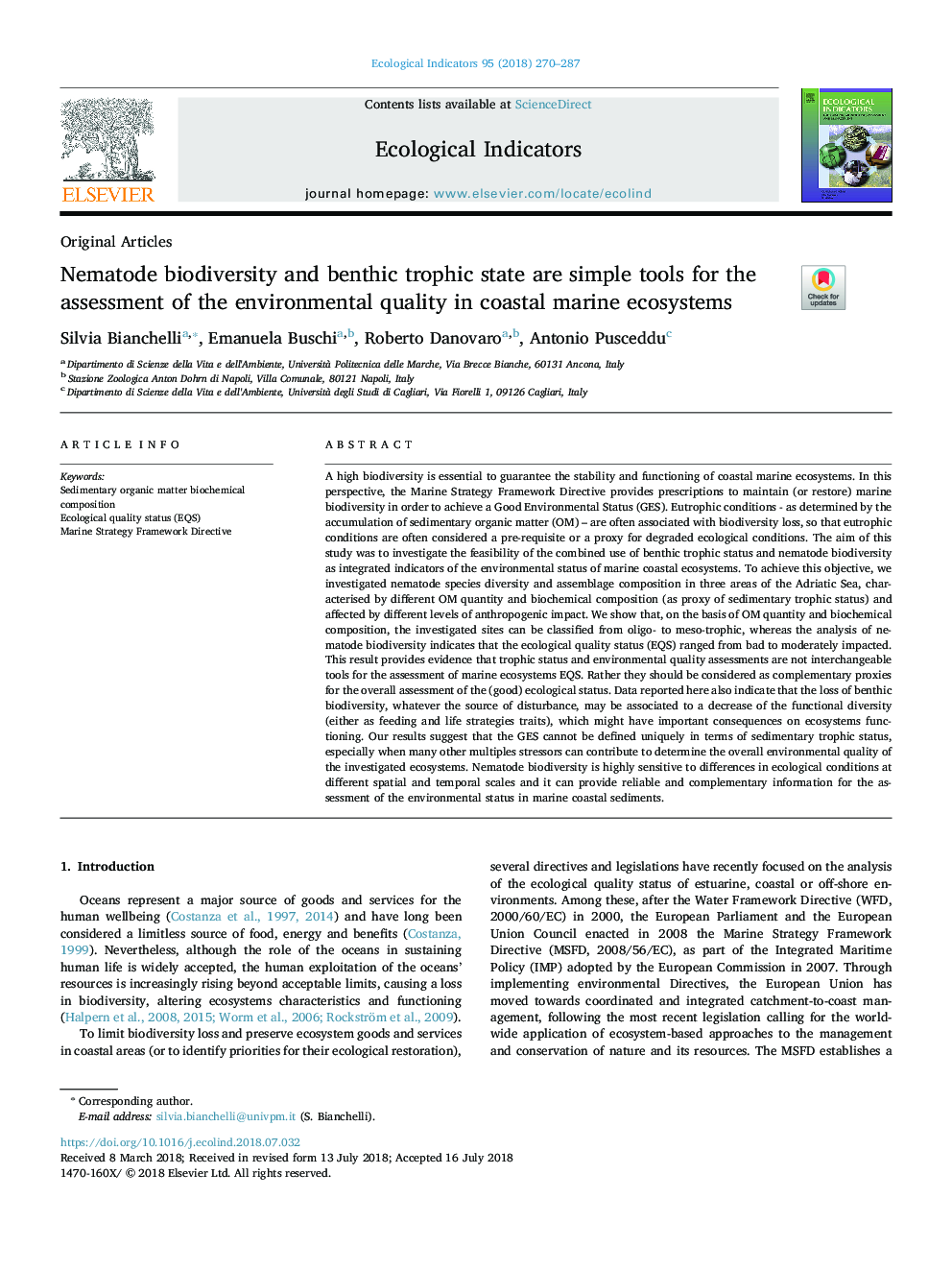| کد مقاله | کد نشریه | سال انتشار | مقاله انگلیسی | نسخه تمام متن |
|---|---|---|---|---|
| 8844948 | 1617107 | 2018 | 18 صفحه PDF | دانلود رایگان |
عنوان انگلیسی مقاله ISI
Nematode biodiversity and benthic trophic state are simple tools for the assessment of the environmental quality in coastal marine ecosystems
ترجمه فارسی عنوان
تنوع زیستی غیر مورفولوژیکی و وضعیت طوفیک بنتوس ابزار ساده ای برای ارزیابی کیفیت محیط زیست در اکوسیستم های ساحلی دریایی
دانلود مقاله + سفارش ترجمه
دانلود مقاله ISI انگلیسی
رایگان برای ایرانیان
موضوعات مرتبط
علوم زیستی و بیوفناوری
علوم کشاورزی و بیولوژیک
بوم شناسی، تکامل، رفتار و سامانه شناسی
چکیده انگلیسی
A high biodiversity is essential to guarantee the stability and functioning of coastal marine ecosystems. In this perspective, the Marine Strategy Framework Directive provides prescriptions to maintain (or restore) marine biodiversity in order to achieve a Good Environmental Status (GES). Eutrophic conditions - as determined by the accumulation of sedimentary organic matter (OM) - are often associated with biodiversity loss, so that eutrophic conditions are often considered a pre-requisite or a proxy for degraded ecological conditions. The aim of this study was to investigate the feasibility of the combined use of benthic trophic status and nematode biodiversity as integrated indicators of the environmental status of marine coastal ecosystems. To achieve this objective, we investigated nematode species diversity and assemblage composition in three areas of the Adriatic Sea, characterised by different OM quantity and biochemical composition (as proxy of sedimentary trophic status) and affected by different levels of anthropogenic impact. We show that, on the basis of OM quantity and biochemical composition, the investigated sites can be classified from oligo- to meso-trophic, whereas the analysis of nematode biodiversity indicates that the ecological quality status (EQS) ranged from bad to moderately impacted. This result provides evidence that trophic status and environmental quality assessments are not interchangeable tools for the assessment of marine ecosystems EQS. Rather they should be considered as complementary proxies for the overall assessment of the (good) ecological status. Data reported here also indicate that the loss of benthic biodiversity, whatever the source of disturbance, may be associated to a decrease of the functional diversity (either as feeding and life strategies traits), which might have important consequences on ecosystems functioning. Our results suggest that the GES cannot be defined uniquely in terms of sedimentary trophic status, especially when many other multiples stressors can contribute to determine the overall environmental quality of the investigated ecosystems. Nematode biodiversity is highly sensitive to differences in ecological conditions at different spatial and temporal scales and it can provide reliable and complementary information for the assessment of the environmental status in marine coastal sediments.
ناشر
Database: Elsevier - ScienceDirect (ساینس دایرکت)
Journal: Ecological Indicators - Volume 95, Part 1, December 2018, Pages 270-287
Journal: Ecological Indicators - Volume 95, Part 1, December 2018, Pages 270-287
نویسندگان
Silvia Bianchelli, Emanuela Buschi, Roberto Danovaro, Antonio Pusceddu,
